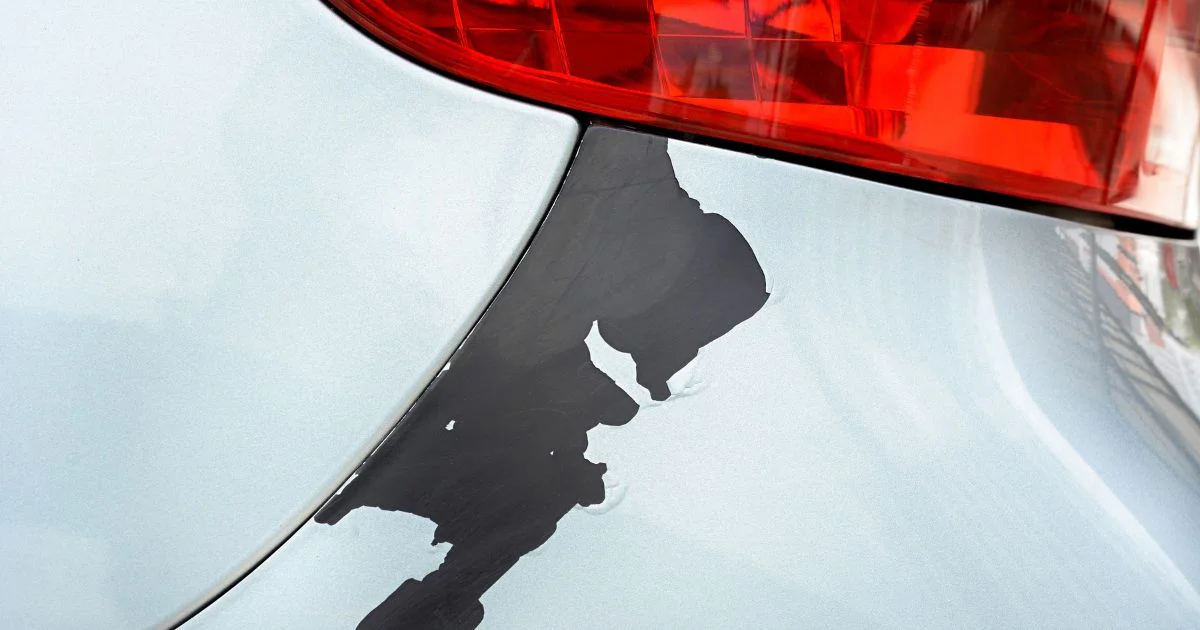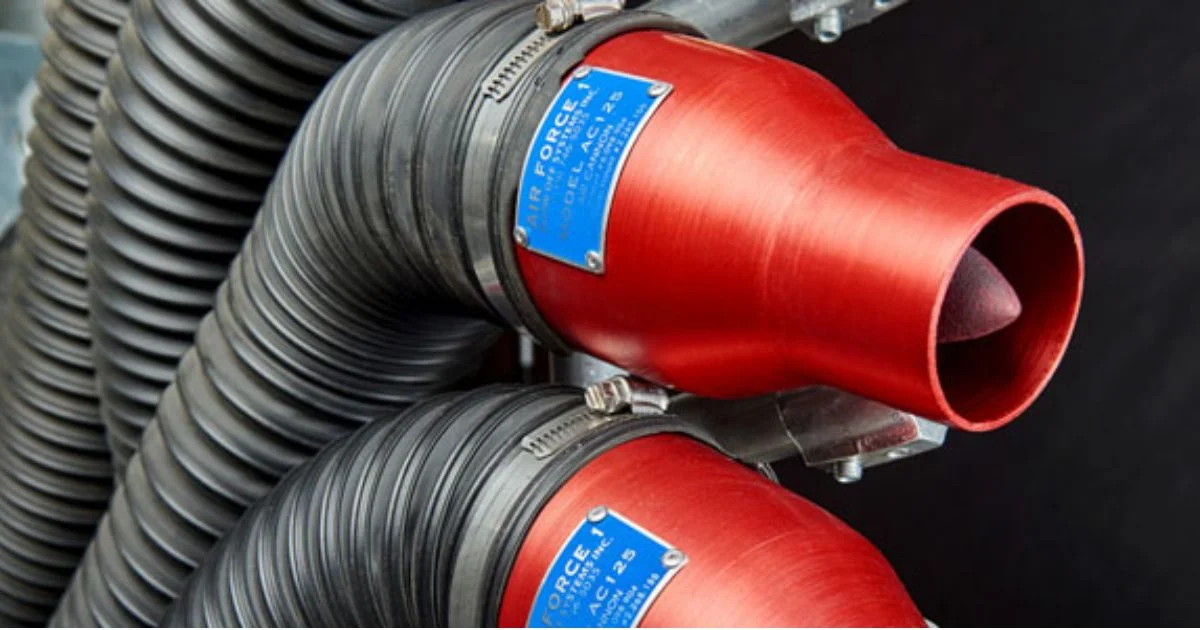
That paint line looked perfect yesterday, but today, it's already peeling. Your team followed procedures, used quality materials, and everything seemed fine during application.
The problem started earlier, though. Before paint touched metal, invisible contaminants were already there. Oil films from machining, dust particles from blasting, and moisture from cleaning all sat waiting. These hidden enemies blocked proper adhesion, and now you're paying for it with rework costs and missed schedules.
Surface preparation standards exist because contamination causes rapid coating failure. You can't paint over problems. Smart facilities prevent contamination rather than fixing failed coatings. Pre-treatment blow off systems address this challenge by removing contaminants before they can cause damage.
Why Surface Contamination Destroys Coatings
Metal surfaces collect contaminants during fabrication. Even new steel arrives contaminated from production or transport. Each manufacturing step adds more problems.
Machining operations leave behind cutting oils that create thin films. These films look invisible but create barriers between metal and coating. Paint can't wet out properly on oily surfaces. The coating appears fine initially, but fails within months.
Blast cleaning creates its own issues as well. Abrasive particles hide in recesses, weld seams, and corners. These particles pass visual inspection but hurt adhesion. When coating cures over blast media, it creates weak spots where corrosion starts.
Welding adds more contamination through flux residues, spatter, and fumes that settle on nearby surfaces. Standard cleaning methods often miss these problem areas. Chemical treatment processes introduce their own challenges as conversion coatings leave residues if not rinsed completely.
Static electricity makes everything worse. It attracts airborne particles like magnets. You can clean a part thoroughly, but static pulls new contamination back within seconds.
The True Cost of Contamination
Coating failures don't just waste paint. Electricity accounts for 76% of compressed air system lifetime costs, and the systems themselves can consume up to 30% of a facility's total electricity. When you're running air systems for rework, those costs multiply quickly.
Failed coatings require complete stripping and re-coating. You pay twice for materials, labor, and energy. Production schedules slip. Rush charges pile up. Customer relationships suffer through warranty claims and quality issues.
According to industry research published in CoatingsPro, 75% of coating failures stem from poor surface preparation—making prevention through proper pre-treatment the most cost-effective strategy.
Environmental costs add up, too. Each rework cycle generates waste requiring proper disposal while increasing VOC emissions. Facilities with repeated failures face compliance issues beyond immediate production concerns.
How Pre-Treatment Blow Off Works
Pre-treatment blow off uses high-velocity air to remove contaminants before coating application. The process differs completely from compressed air blow off that many plants still use.
Direct drive blowers generate consistent airflow without the energy waste of compression. The motor shaft connects directly to the impeller for maximum power transfer. This eliminates belt losses and reduces maintenance needs compared to traditional systems.
Air knives create uniform sheets of high-velocity air across metal surfaces. These precision devices generate laminar flow that sweeps contaminants away cleanly. According to the U.S. Department of Energy, systems that lose 20 to 30% of compressed air to leaks waste thousands in energy costs, but blower-driven systems eliminate this waste.
Air cannon nozzles deliver focused blasts for complex shapes. They reach into recesses, holes, and corners where contamination hides. Multiple nozzles can be positioned to address specific part features.
Static control integration separates effective systems from basic ones. Static bars built into air knives neutralize surface charges while removing particles. This dual action prevents contamination from returning after cleaning.

Setting Up Effective Pre-Treatment Systems
Standards like SSPC-SP2 through SSPC-SP10 define surface cleanliness requirements for different applications. Pre-treatment blow off removes the final contaminants that could prevent surfaces from meeting these standards.
Start by mapping contamination sources in your process. Where do oils come from? Which operations generate dust? When does moisture appear? Understanding contamination patterns helps position blow off equipment effectively.
Timing matters a lot. Clean surfaces attract new contamination quickly in shop environments. Position blow off stations right before coating application. Minimize the time between cleaning and coating to maintain surface cleanliness.
Integration with existing processes determines success. Blow off systems work best when built into production flow. Conveyor-mounted installations clean parts automatically without slowing throughput. Stand-alone stations can create bottlenecks unless carefully planned.
System sizing affects both performance and costs. Undersized systems can't remove contamination well. Oversized systems waste energy. Work with engineers who understand both your production needs and airflow dynamics.
Industries That Can't Afford Contamination
Automotive finishing demands flawless surfaces. Paint defects show immediately on body panels. The automotive industry uses surface treatment broadly to protect exterior surfaces from corrosion and damage. Pre-treatment blow off removes particles that would create visible defects.
Aerospace components operate under extreme conditions. Surface contamination can lead to serious failures. White metal blast cleaning standards apply to critical aerospace applications where coating failure has severe results. Blow off ensures these surfaces remain pristine through assembly.
Heavy equipment manufacturing faces harsh service environments. Coatings protect against corrosion, chemicals, and abrasion. Contamination under coatings speeds up failure in these demanding applications. Thorough pre-treatment extends the equipment's life significantly.
Metal fabrication shops serve all these industries. Consistent surface preparation helps fabricators meet customer specs. Blow off systems provide the reliability needed for diverse coating requirements.
Measuring Pre-Treatment Effectiveness
You can't improve what you don't measure. Surface cleanliness testing verifies that pre-treatment works.
Water break testing shows oil contamination quickly. Spray clean water on prepared surfaces. Proper surface preparation allows water to sheet evenly rather than beading. Beading indicates remaining oil films that need more cleaning.
Surface tension measurements provide numeric values. Dyne solutions test whether surfaces meet coating specs. Most coating manufacturers specify minimum surface tension for proper adhesion. Testing confirms you've reached these levels before coating begins.
Visual inspection under proper lighting reveals particle contamination. White light shows dust and debris that normal shop lighting misses. Standards like SSPC-VIS-1 provide pictorial references for surface preparation acceptance.
Coating adhesion tests verify overall results. Apply test patches using production processes, then perform pull-off tests or cross-cut adhesion checks. These destructive tests prove that pre-treatment delivers the adhesion needed for service conditions.
Comparing Treatment Methods
Several approaches exist for pre-treatment surface preparation. Each has specific applications where it works best.
Hand tool cleaning removes loose contaminants, but can't achieve the cleanliness needed for demanding coatings. Labor costs make it impractical for high-volume operations.
Power tool cleaning provides more thorough preparation. Grinders and wire brushes remove more material but struggle with oil films. Results aren't consistent enough for precision coating work.
Blast cleaning achieves the highest cleanliness levels. It removes all contamination and creates ideal profiles for adhesion. However, blast media itself becomes a contaminant if not removed completely.
Pre-treatment blow off complements all these methods. It provides the final cleaning step that ensures surfaces reach coating stations contaminant-free.
Common Implementation Mistakes
Many facilities undersize their pre-treatment systems. They calculate air needs for perfect conditions without accounting for system losses or part geometry challenges. Undersized systems can't clean well.
Positioning errors waste cleaning power. Blow off works best when air strikes surfaces straight on. Angled installations reduce impact force. Parts passing too far from air knives don't get cleaned completely.
Neglecting static control creates frustrating results. You clean parts thoroughly, but contamination returns before coating. Static bars aren't optional for serious surface preparation.
Poor filtration turns clean air systems into contamination sources. Without proper filtration, you're just moving contaminants around. HEPA filters cost more initially but prevent contamination issues.
Energy Efficiency in Pre-Treatment
Compressed air system efficiency can be as low as 10-15%. Most of the electrical energy turns into heat rather than useful work. This inherent problem makes compressed air expensive for continuous blow off applications.
Direct drive blowers use 70-80% less energy than compressed air for the same blow off performance. WE Energies reports that some blower installations reduce energy costs up to 80% over compressed air systems.
Variable frequency drives optimize energy use further. They adjust blower speed to match actual demand rather than running at full capacity constantly. During lighter production periods, power use decreases automatically.
System pressure affects energy use directly. Each 1 bar pressure increase requires approximately 7-8% more power, according to compressor manufacturers and industry research. Proper system design delivers adequate cleaning force at minimum pressure levels.
Getting Started with Pre-Treatment Blow Off
Assess your current surface preparation process honestly. Where do coating failures occur? Which parts give the most problems? Understanding your specific challenges guides system design.
Document your contamination sources thoroughly. Include oil mist from machining, dust from grinding, and moisture from washing. Each contaminant type requires specific removal strategies. Complete documentation ensures nothing gets overlooked.
Calculate your current costs of coating failure. Include materials, labor, energy, and lost production time. Add customer relationship impacts. These numbers justify investment in proper pre-treatment systems.
At Air Force 1, our team uses AutoCAD and SolidWorks to design systems matching your exact requirements. We analyze part geometry, production flow, and contamination challenges to create solutions that work reliably from installation.
Pre-treatment blow off protects your coating investment by ensuring clean surfaces before application. The right system prevents contamination problems rather than fighting them continuously. Smart surface preparation delivers consistent quality while reducing operating costs.
Ready to eliminate coating failures at their source? Contact us to discuss how engineered pre-treatment blow off can transform your surface preparation process and protect every coating you apply.

